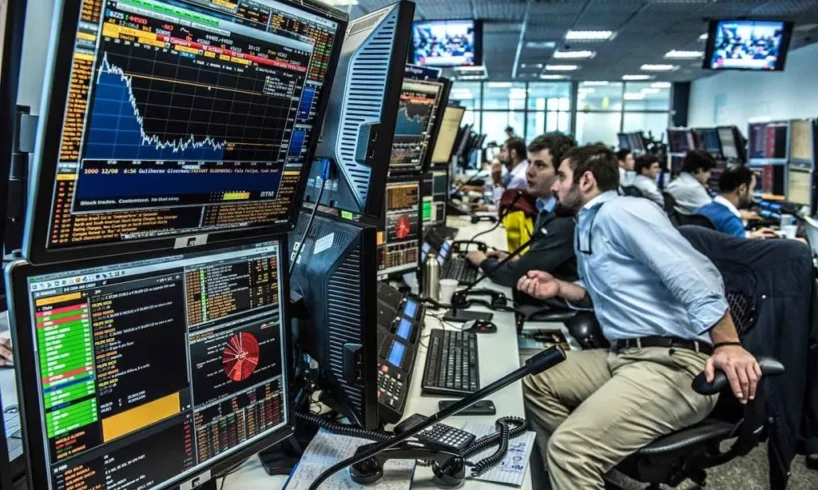
Brazil’s financial markets open today amid a mix of domestic relief from softer inflation (IPCA-15 at 0.18%) and global rate-cut optimism, overshadowed by fiscal strains and a $9.77 billion current-account deficit in September that highlights vulnerability despite $10.67 billion in FDI inflows.
Political revenue pressures continue to stoke public debt fears, pushing reliance on external funding for agribusiness and infrastructure.
U.S.–Brazil leaders traded warm words in diplomacy without drama or concessions, signaling a potential thaw in bilateral ties that could ease tariff tensions and lift trade sentiment.
Brazil’s quiet pivot to Southeast Asia underscores ASEAN’s rising importance, with a $15.5 billion trade surplus in commodities like soy and ores diversifying away from traditional markets.
Petrobras’ output jumped 17.3% to 3.14 million boe/d in Q3 on pre-salt gains, with exports surging 36.1% to 814,000 bpd—tilting toward Asia amid softer global prices.
Yet, August’s inflows of investments in dollars contrasted with outflows, exposing Brazil’s uneasy economic equation of capital volatility.
Today’s economic agenda will deliver essential reads on consumer sentiment, market forecasts, and global demand signals, guiding Brazil’s Selic path, real stability at 5.3926, and export sectors.
Brazil’s Financial Morning Call for October 27, 2025. (Photo Internet reproduction)
Brazil’s FGV Consumer Confidence at 7:00 AM EST (8:00 AM BRT) will probe household spending trends amid 4.94% annual inflation, while the BCB Focus Market Readout at 7:25 AM EST (8:25 AM BRT) aggregates expectations for inflation, GDP, and rates—critical as fiscal gaps widen.
Key global events excluding Brazil and Mexico include U.S. Durable Goods Orders at 8:30 AM EST (9:30 AM BRT) and New Home Sales at 10:00 AM EST (11:00 AM BRT), which will gauge manufacturing and housing strength to influence dollar flows and Brazil’s metal/lumber exports.
Germany’s Ifo Business Climate at 5:00 AM EST (6:00 AM BRT) will flag Eurozone sentiment for ores, Hong Kong’s trade data at 4:30 AM EST (5:30 AM BRT) will clarify Asian soy demand, and South Korea’s Q3 GDP at 7:00 PM EST (8:00 PM BRT) will shape metal outlooks.
These are vital for risk sentiment and Brazil’s competitiveness, bolstered by ASEAN’s $26.3 billion import appetite as a hedge against U.S. frictions.
Economic Agenda
Brazil
7:00 AM EST / 8:00 AM BRT – BRL FGV Consumer Confidence (Oct): Actual TBD, Consensus TBD, Previous 87.5. Tracks household optimism, essential for consumption and retail amid easing inflation pressures.
7:25 AM EST / 8:25 AM BRT – BRL BCB Focus Market Readout: Actual TBD, Consensus TBD, Previous TBD. Aggregates forecasts for inflation, GDP, and Selic rate, pivotal for policy amid fiscal noise and real at 5.3926.
Key Events
United States
8:30 AM EST / 9:30 AM BRT – USD Durable Goods Orders (MoM) (Sep): Actual TBD, Consensus TBD, Previous -2.7%. Signals U.S. manufacturing demand, impacting Brazil’s machinery and metals exports.
8:30 AM EST / 9:30 AM BRT – USD Core Durable Goods Orders (MoM) (Sep): Actual TBD, Consensus TBD, Previous 1.1%. Core gauge excluding volatiles, relevant for Brazil’s industrial trade.
10:00 AM EST / 11:00 AM BRT – USD New Home Sales (MoM) (Sep): Actual TBD, Consensus TBD, Previous 20.5%. Reflects housing trends, affecting dollar and Brazil’s lumber/steel flows.
10:00 AM EST / 11:00 AM BRT – USD New Home Sales (Sep): Actual TBD, Consensus 710K, Previous 800K. Absolute sales data, key for U.S. construction demand on Brazilian goods.
Germany
5:00 AM EST / 6:00 AM BRT – EUR German Ifo Business Climate Index (Oct): Actual TBD, Consensus 88.1, Previous 87.7. Gauges Eurozone sentiment, crucial for Brazil’s ore exports.
5:00 AM EST / 6:00 AM BRT – EUR German Business Expectations (Oct): Actual TBD, Consensus TBD, Previous 89.7. Forward views on demand, influencing commodity prices for Brazil.
5:00 AM EST / 6:00 AM BRT – EUR German Current Assessment (Oct): Actual TBD, Consensus 85.5, Previous 85.7. Current conditions snapshot, relevant for Brazil’s trade partners.
Hong Kong
4:30 AM EST / 5:30 AM BRT – HKD Exports (MoM) (Sep): Actual 16.1%, Consensus TBD, Previous 14.5%. Asian export trends for Brazil’s soy.
4:30 AM EST / 5:30 AM BRT – HKD Imports (MoM) (Sep): Actual 13.6%, Consensus TBD, Previous 11.5%. Import signals affecting global commodity demand.
4:30 AM EST / 5:30 AM BRT – HKD Trade Balance (Sep): Actual -50.2B, Consensus TBD, Previous -25.4B. Balance impacts Brazil’s ag exports.
South Korea
5:00 PM EST / 6:00 PM BRT – KRW Consumer Confidence (Oct): Actual TBD, Consensus TBD, Previous 110.1. Asian sentiment for Brazil’s exports.
7:00 PM EST / 8:00 PM BRT – KRW GDP (YoY) (Q3): Actual TBD, Consensus 0.9%, Previous 0.6%. Growth data affecting commodity demand for Brazil.
7:00 PM EST / 8:00 PM BRT – KRW GDP (QoQ) (Q3): Actual TBD, Consensus TBD, Previous 0.7%. Quarterly view for Brazil’s ag and metals.
Brazil’s Market on Friday
Brazil’s stock market inched higher Friday as the cost of money fell—at home and abroad.
The Ibovespa added 0.31% to 146,172, trimming between 147,240 and 145,721 on the day and finishing the week up 1.93%. The dollar closed at R$5.3926, showing caution.
The trigger was Brazil’s mid-month inflation print: IPCA-15 rose just 0.18% in October, softer than expected. That eased Brazil’s interest-rate curve, the key discounting mechanism for virtually every local asset.
At the same time, Wall Street set fresh records after softer U.S. inflation strengthened expectations for rate cuts there too. The real showed caution: the dollar closed at R$5.3926.
The effect was textbook. Rate-sensitive “domestics” outperformed while commodity and financial heavyweights lagged.
Key movers included CVCB3 (+5.29%), ENEV3 (+4.25%), HYPE3 (+3.18%), IRBR3 (+2.83%), and MGLU3 (+2.67%). Decliners featured BRAV3 (−2.76%), CSAN3 (−2.60%), AURE3 (−1.72%), MBRF3 (−1.51%), and CSNA3 (−1.48%).
Read more
U.S. Markets on Friday
U.S. equities ended higher on Friday, October 24, 2025. The S&P 500 rose 0.8% to 6,791, the Dow Jones gained 1.0% to 47,207, and the Nasdaq Composite climbed 1.1% to 23,205, though the Russell 2000 advanced in line. All three major indexes notched new closing records and gained roughly 2% for the week.
Weekly gains were solid: S&P 500 +2%, Dow +2%, Nasdaq +2%. Sentiment stabilized after regional bank shares rebounded, and Trump’s comments that high China tariffs are “not sustainable” eased trade worries.
Market breadth was solid, with advancing stocks outnumbering decliners on both the NYSE and Nasdaq. The gains were broad-based, signaling strong participation beyond the large technology names that have driven much of 2025’s rally.
In fixed income, the 10-year Treasury yield held around 4.0%, reflecting stable expectations for future rate cuts.
Commodities were mixed, with West Texas Intermediate crude settling near $61.50 per barrel as traders weighed global demand softness against restrained OPEC supply.
Sector performance was led by technology and cyclical stocks after upbeat earnings reports and renewed optimism in artificial intelligence and consumer spending trends.
Automakers like Ford surged following better-than-expected results, while IBM and major AI-linked firms also rallied. Energy stocks underperformed as oil prices drifted lower.
Overall, U.S. equities extended their record-setting run on a combination of easing inflation, resilient corporate profits, and improving investor sentiment.
The coming week’s focus will turn to the Federal Reserve’s policy meeting and the next wave of corporate earnings, which could further define market direction heading into November.
Read more
Commodities
Brazilian Real
The Brazilian real held near 5.3926 against the dollar on October 24, 2025, supported by softer U.S.–China tariff rhetoric and Fed rate-cut bets weighing on the dollar.
However, domestic fiscal concerns, including the widened current-account deficit and political revenue pressures, cap gains. The Selic rate at 15% provides carry support, but fiscal uncertainty limits upside. Technicals show resistance at 5.41–5.42, support at 5.36–5.38.
Today’s BCB Focus at 7:25 AM EST (8:25 AM BRT) and USD Durable Goods Orders at 8:30 AM EST (9:30 AM BRT) will guide currency trends.
Read more
Oil Prices
Oil prices bounced to multi-month highs, with Brent at $65 and WTI at $61 on October 24, driven by global undersupply and strong demand. OPEC+’s cautious supply stance offers some support, but excess crude caps upside.
Petrobras benefits from pre-salt restarting, though softer oil prices pressure margins. No OPEC report is scheduled today, but USD Durable Goods Orders at 8:30 AM EST (9:30 AM BRT) will clarify commodity demand trends.
Read more
Gold Prices
Gold held near $4,075/oz on October 24, buoyed by safe-haven flows amid fiscal and geopolitical uncertainties, including Brazil’s fiscal challenges and Venezuela’s potential post-Maduro shock.
Central bank buying and ETF inflows support prices, with resistance at $4,100 and support at $4,030. This aids Brazil’s mining exports. Today’s EUR German Ifo at 5:00 AM EST (6:00 AM BRT) will signal liquidity trends impacting gold.
Read more
Silver Prices
Silver hit $48.3/oz on October 24, driven by a global supply shock and strong industrial demand in solar and electrification. The Silver Institute projects ongoing deficits, with ETF demand supporting prices.
Resistance is at $49, support at $47.5. This bolsters Brazil’s mining sector. Today’s EUR German Ifo at 5:00 AM EST (6:00 AM BRT) will provide industrial demand cues.
Read more
Copper Prices
Copper traded at $10,375/tonne (LME) or $4.83/lb (COMEX) on October 24, supported by mine disruptions and grid/auto demand but capped by China’s slowdown and trade fears.
Support is at $10,100–$10,250, resistance at $10,500. This aids Vale and Brazil’s producers. Today’s EUR German Ifo at 5:00 AM EST (6:00 AM BRT) will clarify demand trends.
Read more
Cryptocurrencies
Bitcoin rebounded to $116,000 on October 24 after a liquidation shock, supported by U.S. spot ETF inflows and debasement trades.
The near-term range is 114,000–118,000, with a break above eyeing 120,000 or below testing 112,000. Brazil’s fintech sector tracks volatility.
No direct crypto events are scheduled, but USD Durable Goods Orders at 8:30 AM EST (9:30 AM BRT) may influence sentiment.
Read more
Iron Ore Prices
Iron ore slipped to $105/tonne on October 24, pressured by China’s slowdown and rising port inventories, though Brazilian shipments provide stability. Support is at $103–$104, resistance at $106–$108.
This impacts Vale’s exports. Today’s HKD trade data at 4:30 AM EST (5:30 AM BRT) may mute demand signals, but post-holiday China trends will matter.
Read more
Companies and Market
Industry Outlook
Brazil’s economy faces headwinds from fiscal indiscipline, with political revenue hunts raising debt concerns, and a confidence deficit driving builders abroad.
The Ibovespa’s 146,172 close reflects cautious optimism from softer tariff talk, but the real at 5.3926 faces pressure from fiscal uncertainty and the widened current-account gap.
Exporters like Vale benefit from a weaker real, while energy firms like Petrobras gain from operational surges. Infrastructure bets, like Braskem’s R$4.2 billion push and Usiminas’ steel cleanup, signal long-term growth.
Today’s BCB Focus at 7:25 AM EST (8:25 AM BRT), USD Durable Goods Orders at 8:30 AM EST (9:30 AM BRT), and EUR German Ifo at 5:00 AM EST (6:00 AM BRT) will shape demand for mining, energy, and ag sectors.
Read more
Key Developments
Fiscal Pressures: Political drives for revenue widen Brazil’s risk premium, with August’s dollar inflows clashing with outflows in an uneasy equation, pressuring the real and raising debt concerns.
Read more
U.S.–Brazil Relations: Leaders’ warm words without concessions reset ties, aiming for clearer cooperation and boosting trade sentiment amid tariff talks.
Read more
ASEAN Pivot: Brazil’s quiet shift to Southeast Asia highlights ASEAN’s $26.3 billion import role for diversification, with a $15.5 billion surplus in soy and ores.
Read more
Petrobras Surge: Q3 output up 17.3% to 3.14 million boe/d on pre-salt, exports jump 36.1% to 814,000 bpd, reorienting toward Asia.
Read more
Plastics Expansion: Braskem’s R$4.2 billion Rio bet on cheaper gas adds 220,000 tons ethylene/polyethylene by 2028, fueling reindustrialization.
Read more
Steel Reckoning: Usiminas’ Q3 R$3.5 billion loss from impairments masks EBITDA rise to R$434 million, cash flow R$878 million, and low 0.16x debt.
Read more
Debt Maneuver: Ambipar’s court shield on R$11 billion debt tests Brazil’s rules, coordinating with U.S. Chapter 11 amid covenant breaches.
Read more





